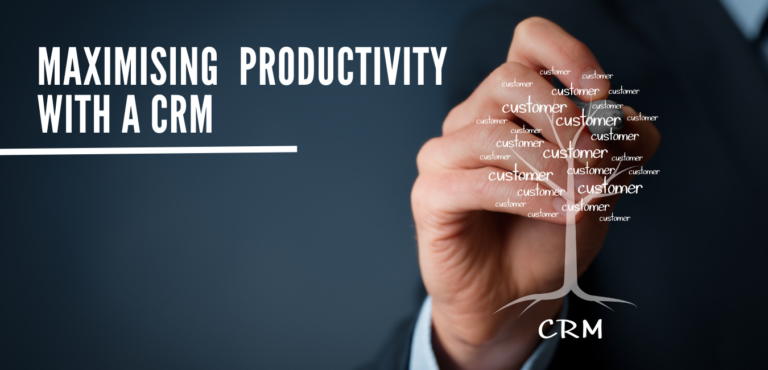Strategic Planning – Working On Your Business, Not Just In It
It’s business 101 that you should make time to work on your business, not just in it. We’ve heard it from business gurus, coaches, at networking events and in many other ways. But, what does it actually mean and how do we achieve it? In this blog we’ll explore the importance of strategic planning for your business and how you can balance it with the day-to-day operations.
Understanding Strategic Planning
Strategic planning is all about shaping your business’s future. By envisioning where you want your business to be and what you want it to look like in future you can create goals in order to help you get to that future. You can then strategically plan what action steps need to be taken in order to achieve those goals. Strategic planning ensures that your business moves forward in the direction you want it to go rather than staying stagnant.
Working ‘in’ your business is concentrating on your day-to-day operations and immediate tasks. Working ‘on’ your business is all about thinking through the longer-term goals, growth strategies and improvements you want to make. Strategic planning is all about thriving as a business both now and in the future.
Benefits of Strategic Planning
Long-Term Vision and Direction: Strategic planning sets out clear long-term goals and direction of travel for your business. Having these set out allows you to allocate resources and concentrate your effort towards that goal and ensure that the rest of your team are working towards that vision.
Resource Allocation: Effective strategic planning ensures that your key resources – time, money and manpower – are aligned to your goals. By prioritising these resources effectively you are more likely to achieve your goal.
Risk Management: Strategic planning helps you to identify any potential risks and mitigate against them. This proactive approach helps in reducing uncertainties and preparing your business for unforeseen challenges.
Competitive Advantage: A well though out strategic plan helps you to stay ahead of the competition. By analysing what’s happening in your market and understanding your strengths and weaknesses you can position your business to out perform your competitors.
Getting Started with Strategic Planning
Step 1: Set Clear Objectives
• Importance of Setting SMART Goals: Ensure your goals are Specific, Measurable, Achievable, Relevant, and Time-bound. This clarity helps in creating a focused and actionable plan.
• Examples of Strategic Objectives: Examples include expanding into new markets, launching new products, improving customer satisfaction, or increasing operational efficiency.
Step 2: Conduct a SWOT Analysis
• Explanation of SWOT Analysis: SWOT stands for Strengths, Weaknesses, Opportunities, and Threats. It’s a tool to assess your business’s internal and external environment.
• How to Conduct a SWOT Analysis: Gather your team, brainstorm each category, and list relevant factors. Analyse these factors to inform your strategic decisions.
• Using the Results: Leverage your strengths, address your weaknesses, capitalize on opportunities, and mitigate threats.
Step 3: Develop Action Plans
• Breaking Down Strategic Objectives: Convert your strategic goals into actionable steps. This involves outlining specific tasks, timelines, and responsible parties.
• Assigning Responsibilities and Setting Deadlines: Ensure accountability by assigning tasks to team members and setting clear deadlines.
• Examples of Action Plans: For instance, if your goal is to increase customer satisfaction, action plans might include improving customer service training, implementing a new CRM system, and launching a customer feedback program.
Step 4: Monitor and Adjust
• Importance of Regular Review: Regularly review progress towards your strategic goals to ensure you’re on track.
• Measuring Success and Adjusting: Use key performance indicators (KPIs) to measure success. Be prepared to adjust your plans based on feedback and changing circumstances.
• Tools for Tracking Progress: Utilise project management tools and dashboards to keep track of progress and ensure accountability.
Overcoming Common Challenges
Resistance to Change: Change can be difficult, and some team members might resist new strategies. Foster a culture of strategic thinking by involving your team in the planning process and clearly communicating the benefits.
Lack of Time: Finding time for strategic planning amidst daily operations can be challenging. Prioritise strategic planning by setting aside dedicated time for it, and remember that investing time in planning can save time in the long run.
Unclear Goals: Ensure your goals are clear and actionable. If goals are too vague, it’s hard to create an effective plan. Use the SMART criteria to set clear and achievable goals.
Strategic planning is a vital process for any business aiming for long-term success. By setting clear objectives, conducting a SWOT analysis, developing action plans, and regularly monitoring progress, you can ensure your business is not just surviving but thriving. Overcome common challenges by fostering a strategic mindset, prioritising planning and setting clear goals.
Ready to take your business to the next level? Start your strategic planning journey today and see the difference it can make. If you need guidance, consider booking a Business Admin Audit with us. Our audit will help you identify strengths, areas for improvement, and provide actionable insights to boost your business’s success. Book your FREE no-obligation discovery call today and start working on your business, not just in it!







